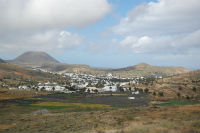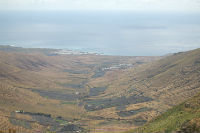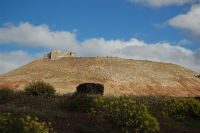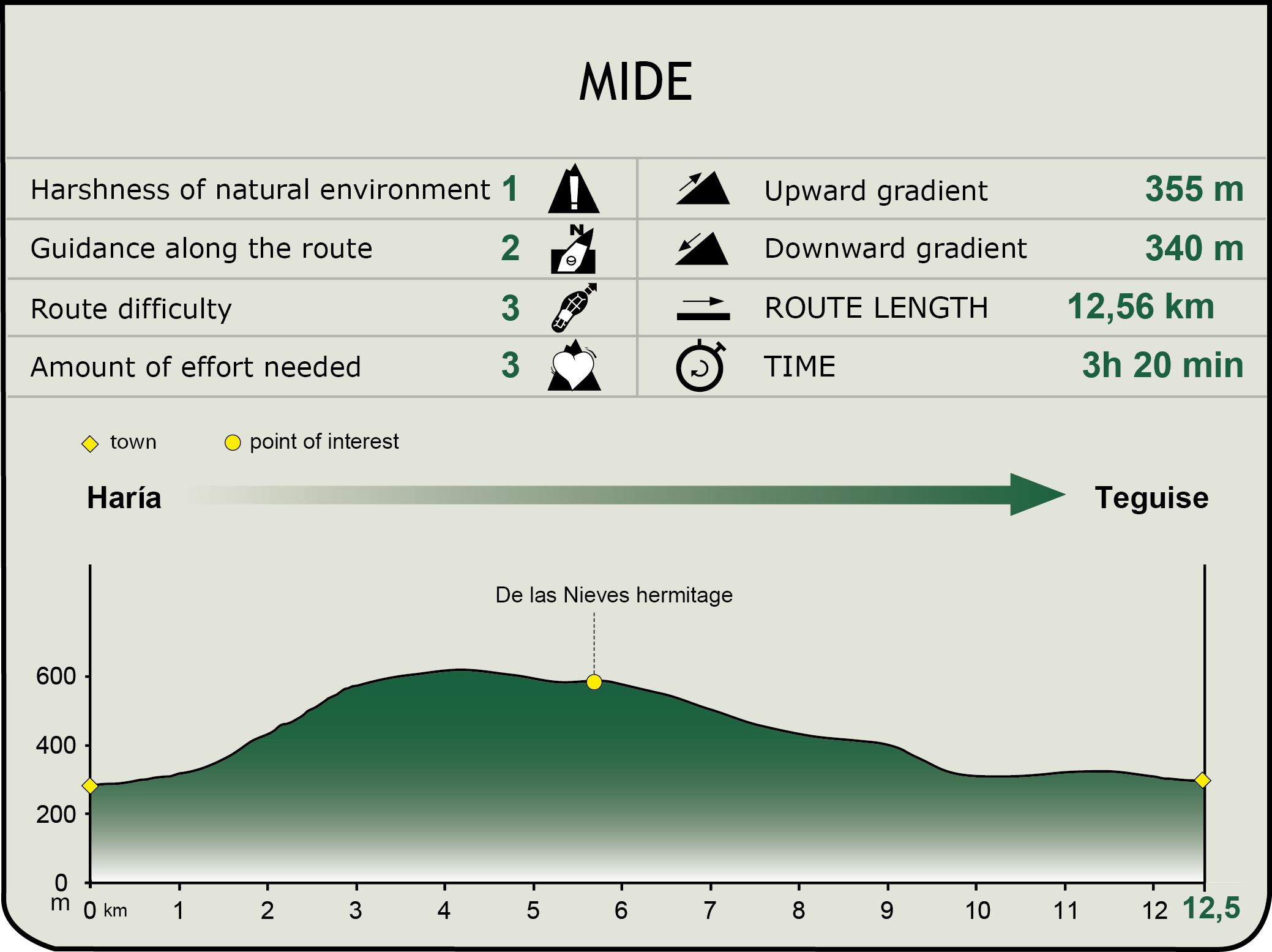- Home
- Rural Development
- Nature Trails
- Nature Trails
- Canary Islands Sector
- Órzola a Playa Blanca
Stage 2: Haría-Teguise
Description

Haría and Teguise, two towns separated by the Peñas del Chache and the hermitage of Las Nieves
The beautiful town of Haría is the starting point of the second stage of the Órzola-Playa Blanca Nature Trail. This trail goes up through the Malpaso valley, where the traveller can admire the views over the beaches near the towns of Arrieta and Punta Mujeres, in the eastern area of Lanzarote. From the vicinity of Peñas del Chache and the hermitage of Las Nieves, two of the highest points along this stage, the traveller can see the western area of the island, where the beaches of Famara are located. Farther into this stage, the trail finally descends to Teguise, a town full of landmarks where this stage comes to an end.

The second stage of the Órzola-Playa Blanca Nature Trail runs between the towns Haría and Teguise. This stage starts near the city council of the former, at the beginning of La Longuera Street. Then, the trail turns left onto Ángel Guerra Street and the traveller will see two traditional wells while going up, one on each side of the street. The trail then turns right through Elvira Sánchez Street and, past César Manrique House and Museum, it leaves the town behind.
The paved road ends at kilometre 13 and the trail continues through a wide dirt path. The trail goes up Malpaso valley, which used to be almost entirely cultivated by means of terraces. When looking back, the traveller will be able to admire the beautiful panoramic views over Haría. The trail crosses the LZ-10 road, becoming a narrower stone path after the intersection. It will cross the road again up to three times. The trail continues winding up the slope to kilometre number 15, where it becomes a wide dirt path allowing the traveller to rest and admire the views over the towns of Tabayesco and Arrieta.

A few metres after the path widens, the dirt path turns into a paved track. In the ascent, the astronomical observatory located in the Peñas del Cache is left on the right.
Then, a descent starts which, past kilometre 17 and an intersection with short-distance paths, ends in a terrace where the traveller can admire the wonderful views over the beach of Famara.
After a slightly steep slope, the traveller arrives at the hermitage of Las Nieves, located in a perfect setting from where most of Lanzarote island can be admired. The paved section ends at the hermitage parking lot, and a wide downhill dirt path leads to the town of Teguise. The traveller leaves a military building on the right and the trail continues going down, turning right through a narrow path a few metres after kilometre 21. This downhill path is steeper and, due to its gradient and rockiness, the travellers who are cycling the Órzola to Playa Blanca Nature Trail must either use all their skills when going down this stretch, or get off their bicycles and continue on foot.

The trail takes a dirt path again a few metres before kilometre 22, where there are different crops and the downhill slope becomes smoother.
The traveller leaves the remains of the hermitage of San José on the left and continues towards Teguise. The trail enters the town through Gadifer de la Salle Street, leaving the Secondary School and the football field on the left. Later on, the traveller crosses to Puerto y Villa de Garachico Street with caution. The trail goes down this street and passes kilometre number 24. At the end of this street, the Órzola-Playa Blanca Nature Trail and the Soo-La Villa Nature Trail meet.
The trail turns left onto Clavijo and Fajardo Square and then right onto 18 de Julio Square. After crossing this square, the traveller walks through Maciot de Bethencourt Square and turns left towards Santo Domingo Street. This stage ends at the convent of Santo Domingo, located in the namesake square.
Sites of interest
Profile

MIDE (Method for the Information of Excursions)
Featured
Further information
Haría
Haría is a municipality in the Lanzarote island. It is made up of 10 population centres, the most important of which is also called Haría. There were different pre-Hispanic settlements in this municipality. One of them, known as Queseras de Bravo, stands out due to its peculiarities. Back in the day, this settlement suffered several pirate attacks, the most devastating of which occurred on 1st August 1586. Its inhabitants have traditionally been farmers and cattle breeders, and there are high emigration rates in the area, due to the different crises that these industries have endured over the years. The patron saint’s festivities are in honour of San Juan, and a traditional bonfire is lit during them. In this town, César Manrique House and Museum stands out, together with León y Castillo Square and Constitución Square, with its beautiful architecture.
Teguise
Teguise is the biggest municipality on the island of Lanzarote, and the namesake town was the capital of the island until 1847. One of the most important indigenous settlements was located in this town. Despite its location, this town endured several pirate attacks after being conquered by the Europeans. The defensive construction of Santa Bárbara castle, which holds the Piracy Museum today, is a witness to this. The cultivation of cochineals to obtain carmine dye was of great importance in this town; however, tourism is the main economic source today. Teguise has an important architectural heritage, with several landmarks worth noting: the aforementioned castle of Santa Bárbara, the church of Nuestra Señora de Guadalupe and the convent of Santo Domingo. The Diabletes de Teguise, a show where devil-like characters try to scare the children in town, is the main theme of its Carnival.